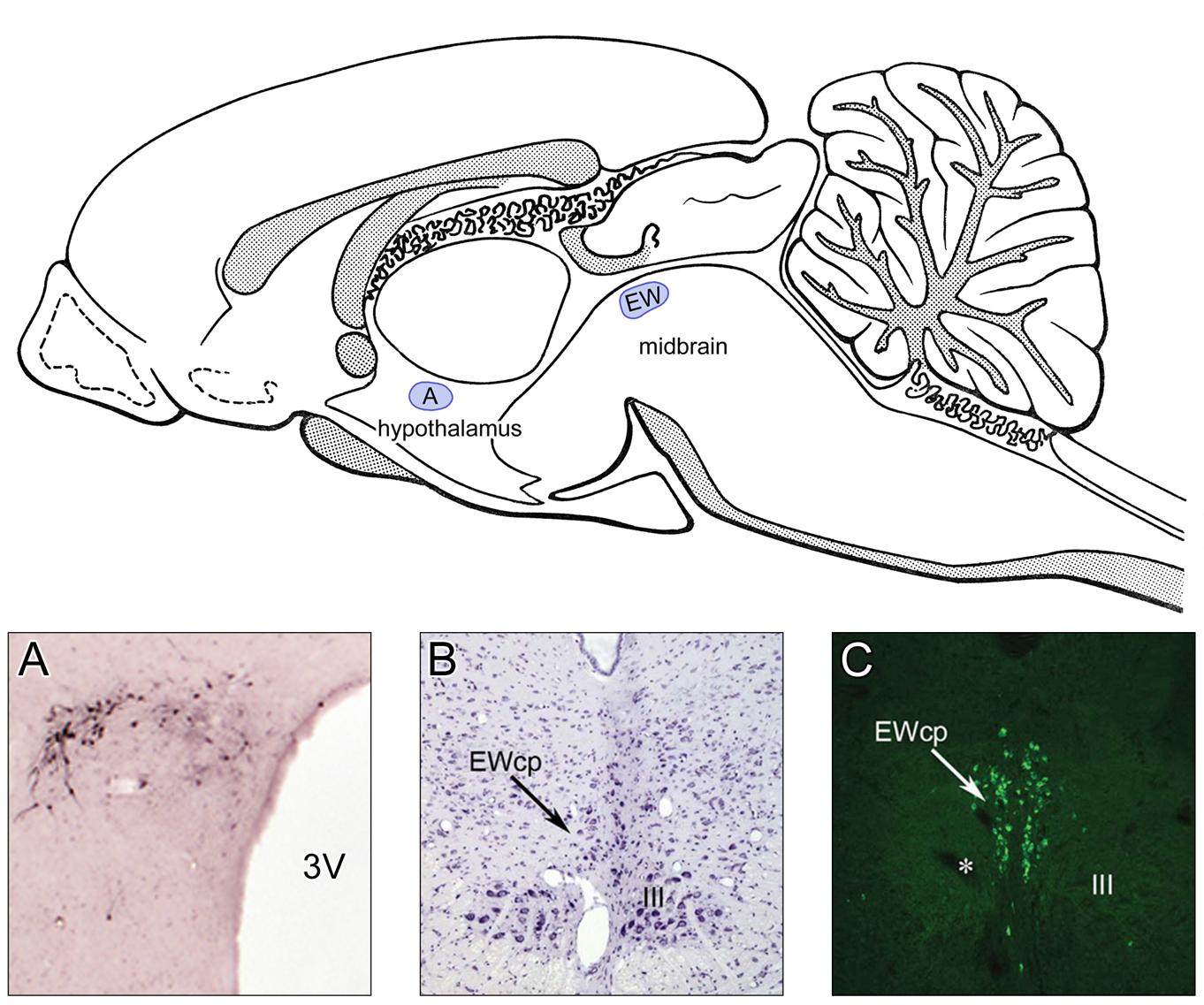A more imaginative approah – even though burdened with a broad margin of error – sometimes does more for progress than the „correct“ inductive path to discovery“. To be exact, both are needed.
I confess that the elegance and beauty of a concept is much more attractive to me than the dreary details of fact“ (Szentágothai).

Urocortin-expressing neurons in the medial hypothalamus (A) and the Edinger-Westphal nucleus (EWcp) in the midbrain (B, C). B – Nissl staining, C – immunofluorescence for urocortin I. 3V = third ventricle, III = motor oculomotor nucleus.
by M. Palkovits
Studies in the second part of the XIXth century established the concept of the Edinger-Westphal nucleus as a parasympathetic preganglionic neuron group lying over the motor oculomotor nucleus in the mesencephalon and responsible to the control of accomodation and the light reflex of the pupilla through the ciliary ganglion. Although prominent neuroanatomists, including Ramon y Cajal clearly demonstrated that additional neurons are juxtaposed to the ganglionic cells, the term of the nucleus of Edinger-Westphal was generally used only for the preganglionic activity until the end of the XXth century, and it is still commonly used in the clinical practice.
In 1942, Szentágothai modified the Bielschowsky silver impregnation method and initiated with it experimental secondary degeneration studies after experimental removal of the ciliare ganglion in cat (Szentágothai J (1942) Die innere Gliederung des Oculomotorius-kernes. Arch. Psychiatr., 115, 127-135). He observed that after the extirpation of the ganglion, only one-fifth of the cells in the Edinger-Westphal nucleus degenerate, whereas their majority remains intact. This finding was in contrast to the prevailing view on the function of Edinger-Westphal nucleus, as a parasympathetic preganglion. Realising that only a smaller portions of the cells degenerate (those which participate in the parasympathetic innervations of the eyes) and the morphology of these cells is different from that of the remaining intact neurons (which reminded him to neurons in the hypothalamus), he postulated that “they might have some vegetative functions, like neurons in the hypothalamus” (Szentágothai, 1942).
This was a prophetic prediction, decades prior to the „imunohistochemical era“, as he realised an analogy between the parvocellular neurosecretory system in the hypothalamus and non-ganglionic cells in the mesencephalic central gray. Twenty years after his studies on the Edinger-Westphal nucleus, Szentágothai identified neurohormon-synthesising neurons in the medial hypothalamus and, additional 45 years later it has been verified that the non-ganglionic neurons in the Edinger-Westphal nucleus are centrally projecting peptidergic neurons (for review, see Kozicz, T. et al., 2011, J. Comp. Neurol. 519, 1413–1434.). Just for the final point, the newly discovered neuropeptide urocortin that has been localized in the parvocellular neurons of the Edinger-Westphal nucleus are also expressed by neurons in the medial hypothalamus.
